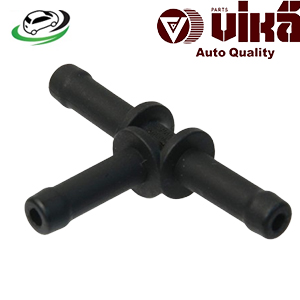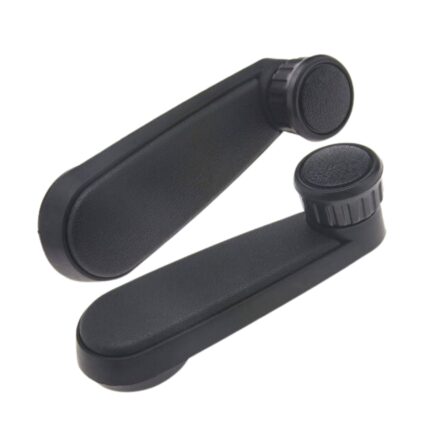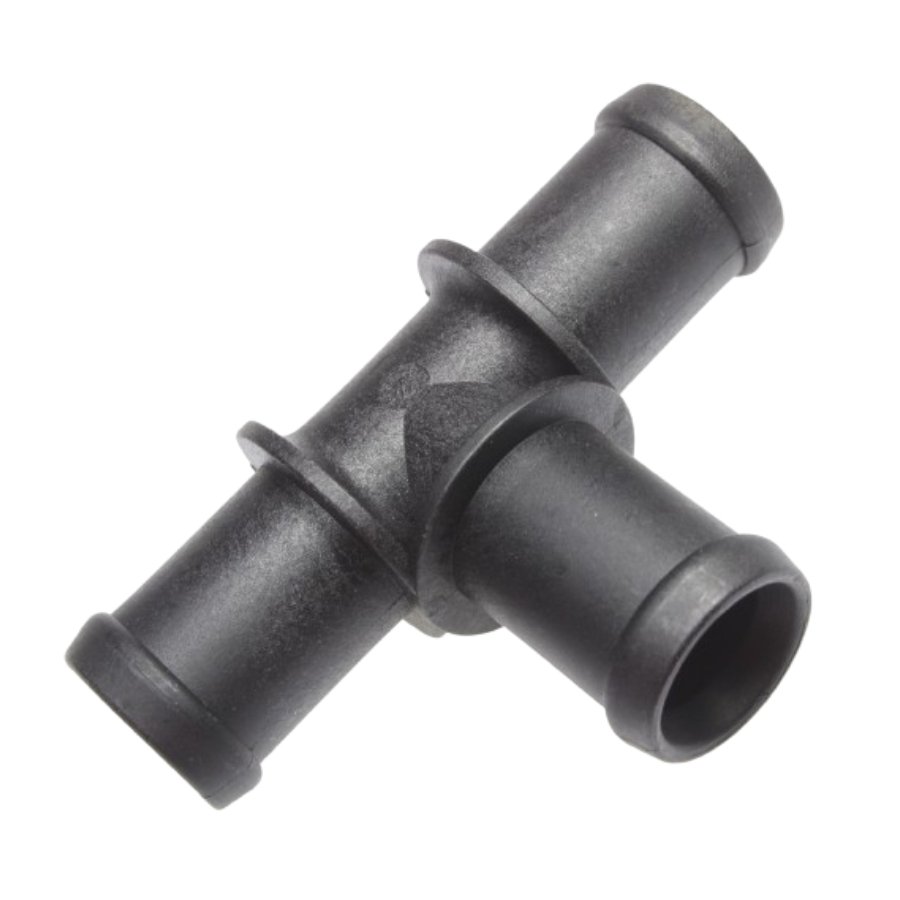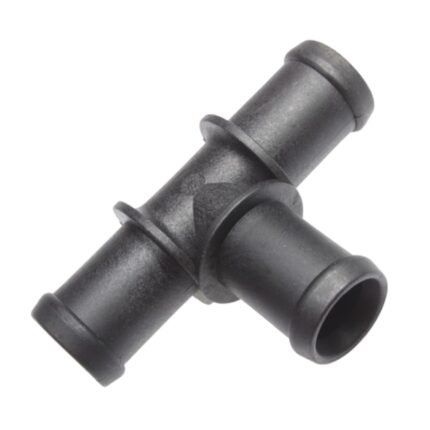Get AUDI B6 S4 All V8 Fitting Hose Connector N90760601 in Kenya
A T-fitting hose connector is an essential component in various fluid management systems, particularly in automotive, plumbing, and industrial applications. Its name stems from its distinctive “T” shape, which allows it to connect three different hoses or pipes. The T-fitting enables fluid, gas, or coolant to be directed or split into two paths from a single source or merge two streams into one.
In the automotive world, T-fitting hose connectors are primarily used in the engine’s cooling system, vacuum lines, fuel systems, and air intake systems. It plays a significant role in directing the flow of fluids and gases, ensuring efficient vehicle operation.
2. Structure and Design of the T-Fitting Hose Connector
A T-fitting hose connector has a simple yet highly functional design. The connector consists of three openings or ports, arranged in a “T” formation:
- Main Inlet (or Outlet): This is the horizontal line of the “T” and can serve as either an inlet or an outlet, depending on the configuration of the system.
- Branch: The vertical leg of the “T” is the branch that can be used to direct the flow of fluids or gases to another hose or pipe.
These fittings are typically constructed from different materials based on the application. The most common materials include:
- Plastic (Nylon, PVC, Polypropylene): Common in lower pressure systems like automotive vacuum lines, cooling systems, and windshield washer systems. Plastic T-fittings are lightweight, corrosion-resistant, and cost-effective.
- Brass: Used in more demanding applications such as fuel and air systems, brass T-fittings offer superior strength, durability, and resistance to corrosion.
- Aluminum or Stainless Steel: These materials are used in high-pressure or high-temperature environments, such as turbocharged engine systems or hydraulic applications.
The simplicity of the T-fitting design allows it to serve a wide range of functions in both automotive and industrial systems, making it one of the most versatile connectors available.
3. Function of the T-Fitting Hose Connector
The T-fitting hose connector is primarily used to control the flow of fluids or gases within a system by enabling a split or merge of lines. Here are some of its key functions:
- Coolant Flow Distribution: In a vehicle’s cooling system, T-fittings can be used to direct coolant to multiple areas of the engine. For example, one side of the “T” may direct coolant from the radiator to the engine block, while the other branch may send it to a heater core or auxiliary cooling system.
- Fuel Line Distribution: T-fittings are commonly found in fuel systems where fuel needs to be distributed to multiple carburetors or fuel injectors from a single fuel line. The fitting helps ensure that each component receives an adequate supply of fuel.
- Vacuum Line Splitting: Many automotive systems rely on vacuum lines to control various components such as brake boosters, turbocharger wastegates, or HVAC systems. A T-fitting is often used to split vacuum from one source and distribute it to multiple devices.
- Air Intake Systems: T-fittings can also be used to manage airflow in turbocharged or supercharged engines. These systems may use T-fittings to distribute compressed air from the intake manifold to multiple intake ports or bypass valves.
- Pressure Equalization: T-fittings are useful in systems where pressure needs to be equalized across multiple points. For instance, in an air suspension system, T-fittings can help distribute compressed air to different air springs, ensuring even pressure.
4. Types of T-Fitting Hose Connectors
T-fitting hose connectors come in various configurations and designs depending on the specific application:
- Barbed T-Fittings: These connectors have ridges or “barbs” that help secure the hose onto the fitting, preventing it from slipping off. Barbed fittings are common in lower-pressure systems such as vacuum lines, fuel hoses, and cooling systems.
- Quick-Connect T-Fittings: Quick-connect fittings allow for easy attachment and detachment of hoses without the need for tools. These fittings are designed for convenience and are used in systems that require frequent disconnection, such as air tools or fluid transfer systems.
- Threaded T-Fittings: These fittings have threads on the ports, allowing for a secure connection to hoses or pipes that are threaded. They are often used in high-pressure systems where a secure, leak-proof connection is critical.
- Compression T-Fittings: These fittings use a compression nut and ferrule to create a tight seal on the hose or pipe. Compression fittings are typically found in hydraulic systems, fuel lines, and high-pressure fluid systems.
- Push-to-Connect T-Fittings: These fittings are designed for easy installation by simply pushing the hose into the connector. They provide a secure and leak-proof connection without the need for additional tools.
5. Applications of the T-Fitting Hose Connector in Vehicles
The T-fitting hose connector is widely used in automotive systems, where it performs several critical functions:
- Cooling System Management: T-fittings are commonly used in the engine cooling system to distribute coolant between the radiator, engine, and heater core. The connector ensures that coolant is routed to multiple areas of the engine for efficient temperature control.
- Fuel System Distribution: In multi-carburetor or multi-injector systems, T-fittings help distribute fuel evenly from a single fuel line to multiple carburetors or injectors, ensuring consistent fuel delivery.
- Vacuum Line Splitting: T-fittings are frequently used in vacuum lines to distribute vacuum pressure to various engine components, including the brake booster, PCV valve, and turbocharger wastegate.
- Turbocharging and Supercharging Systems: In performance vehicles, T-fittings are used to route compressed air from the intake manifold to various parts of the engine, including blow-off valves and wastegates, which regulate turbocharger pressure.
- Emissions Systems: T-fittings can also be found in emissions control systems, where they help route air and gases between components like the EVAP canister, catalytic converter, and exhaust manifold.
6. Benefits of the T-Fitting Hose Connector
The T-fitting hose connector offers several key benefits in fluid and gas management systems:
- Versatility: T-fittings are incredibly versatile, as they can be used in a variety of applications, including cooling systems, fuel systems, vacuum lines, and air intake systems. Their ability to split or merge fluid or gas flows makes them an indispensable component in many systems.
- Cost-Effective: T-fittings are a cost-effective way to manage complex fluid or gas distribution networks. Instead of installing multiple hoses or pipes, a single T-fitting can effectively route multiple lines, reducing the need for additional components.
- Easy Installation: Many T-fitting connectors, particularly barbed and quick-connect fittings, are designed for easy installation. They require minimal tools, making them convenient for repairs or upgrades in automotive systems.
- Leak Prevention: When properly installed, T-fittings create a tight, leak-proof seal that prevents fluid or gas loss. This is critical in systems like cooling, fuel, and vacuum lines, where even small leaks can cause performance issues or damage.
- Durability: T-fittings are built to withstand harsh conditions, including high temperatures, pressures, and exposure to chemicals. This durability makes them well-suited for demanding automotive applications.
7. Common Issues with T-Fitting Hose Connectors
While T-fitting hose connectors are durable and reliable, they can experience issues over time:
- Cracking or Breaking: Plastic T-fittings can crack or break over time, especially when exposed to extreme temperatures or high pressures. This can lead to leaks or a complete failure of the connector.
- Corrosion: Metal T-fittings, particularly those made from brass or aluminum, can corrode over time when exposed to moisture, chemicals, or fuel. Corrosion can weaken the fitting, causing leaks or blockages.
- Loose Connections: Over time, the connection between the hose and the T-fitting may loosen, leading to leaks. This is more common in systems where hoses are subject to frequent vibration or movement.
- Clogging: Debris or contaminants in the fluid system can accumulate inside the T-fitting, causing blockages that restrict fluid or gas flow. This can affect the performance of the system and lead to overheating or poor fuel delivery.
8. Maintaining and Replacing T-Fitting Hose Connectors
To ensure the longevity and reliability of T-fitting hose connectors, regular maintenance is crucial:
- Inspect for Leaks: Periodically inspect T-fitting connectors for any signs of leaks. Coolant, fuel, or vacuum leaks can indicate that the connector is cracked, loose, or corroded and needs to be replaced.
- Replace Worn or Damaged Fittings: If a T-fitting shows signs of wear, cracking, or corrosion, it should be replaced immediately to prevent further damage to the system.
- Secure Connections: Ensure that all hoses and clamps are securely fastened to the T-fitting. Loose connections can lead to leaks and reduced performance in the system.
- Use Appropriate Materials: When replacing T-fittings, use connectors made from materials suited to the specific application. For example, plastic fittings are fine for lower-pressure systems, but metal fittings should be used in high-temperature or high-pressure environments.
9. Conclusion
The T-fitting hose connector is a vital component in many automotive and industrial systems, allowing the efficient distribution and control of fluids and gases. Its simple yet effective design enables it to perform a wide range of functions, from splitting coolant flow in a vehicle’s engine to distributing vacuum pressure in critical systems.
By ensuring secure and leak-proof connections, the T-fitting hose connector plays a crucial role in maintaining system performance and reliability. Regular inspection, proper installation, and timely replacement are essential to keep these connectors functioning correctly and to prevent potential issues like leaks, corrosion, or blockages.
With its versatility, durability, and ease of use, the T-fitting hose connector is indispensable in fluid and gas management, helping systems run smoothly and efficiently.
Follow us on Facebook for more parts.





Reviews
Clear filtersThere are no reviews yet.